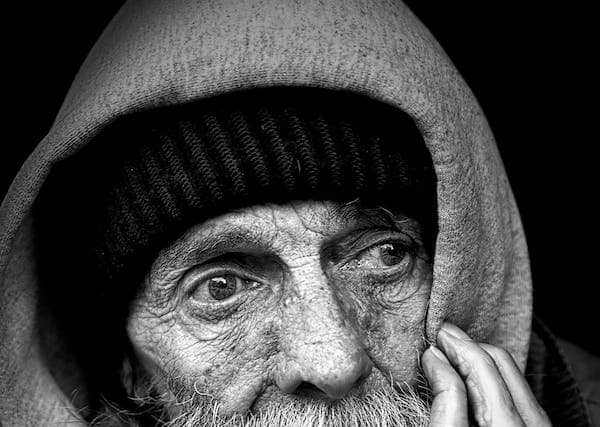Mental health disability are a diverse and often misunderstood category of conditions that affect millions of individuals worldwide. These disabilities encompass a wide range of disorders, including but not limited to depression, anxiety, bipolar disorder, schizophrenia, and post-traumatic stress disorder (PTSD). In this article, we will explore the various aspects of mental health disabilities, their impact on individuals and society, the challenges they present, and the importance of promoting inclusion and reducing stigma.
I. Understanding Mental Health Disability
- Types of Mental Health Disability
Mental health disability are not limited to a single condition; they encompass a spectrum of disorders. Some individuals may experience a single disorder, while others may have a combination of conditions. It’s crucial to recognize the diversity within this category, as each condition presents its unique challenges.
- Prevalence
Mental health disability are prevalent worldwide. According to the World Health Organization (WHO), depression alone is one of the leading causes of disability globally. The prevalence of these disabilities underscores the importance of understanding and addressing them effectively.
II. The Impact on Individuals
- Emotional and Psychological Toll
Living with a mental health disability often involves a significant emotional and psychological toll. Individuals may experience persistent feelings of sadness, anxiety, or fear, which can affect their overall quality of life. The daily challenges of managing symptoms and seeking treatment can be exhausting.
- Social Isolation
Mental health disability can lead to social isolation due to the stigma and discrimination associated with these conditions. Individuals may withdraw from social interactions, exacerbating feelings of loneliness and further impacting their mental health.

- Occupational and Educational Challenges
Maintaining employment and pursuing educational opportunities can be challenging for individuals with mental health disabilities. Stigma in the workplace and academic institutions may lead to discrimination, hindering career advancement and academic success.
III. The Stigma Surrounding Mental Health Disability
- Misconceptions and Stereotypes
One of the most significant challenges faced by individuals with mental health disabilities is the prevalence of misconceptions and stereotypes. These misconceptions often perpetuate stigma and discrimination, making it difficult for individuals to seek help and support.
- Self-Stigma
Individuals with mental health disabilities may internalize societal stigma, leading to self-stigma. This self-criticism can erode self-esteem and self-worth, further complicating their ability to manage their conditions.
IV. Promoting Inclusion and Reducing Stigma
- Education and Awareness
One of the most effective ways to combat stigma is through education and awareness campaigns. These initiatives can help dispel myths and promote understanding of mental health disabilities. Schools, workplaces, and communities should provide resources and training.
- Encouraging Open Conversations
Encouraging open conversations about mental health is crucial. When individuals feel safe discussing their experiences and challenges, it can foster empathy and support within communities. Initiatives like “Mental Health First Aid” training can empower individuals to provide assistance when needed.
- Access to Mental Health Care
Ensuring access to quality mental health care is essential for individuals with mental health disabilities. Adequate support, therapy, and medication can significantly improve their quality of life and ability to manage their conditions effectively.

- Workplace Accommodations
Employers can play a significant role in supporting employees with mental health disabilities. Implementing workplace accommodations, such as flexible schedules, remote work options, and mental health days, can create a more inclusive environment.
V. Legal and Policy Considerations
- Anti-Discrimination Laws
Many countries have anti-discrimination laws in place to protect individuals with mental health disabilities. These laws prohibit discrimination in employment, housing, and public services based on mental health status.
- Advocacy and Policy Change
Advocacy groups and organizations play a crucial role in pushing for policy changes that promote the rights and well-being of individuals with mental health disabilities. These efforts can lead to improved services and increased support for those in need.
VI. The Role of Family and Support Networks
- Family Support
Families often provide a significant source of support for individuals with mental health disabilities. Educating family members about these conditions and involving them in the treatment process can be essential to an individual’s recovery.
- Peer Support
Peer support groups, where individuals with similar experiences come together, can be immensely beneficial. These groups offer a sense of belonging and understanding that can help combat feelings of isolation.
Conclusion
Mental health disability is a complex and multifaceted issue that affects millions of individuals worldwide. The impact of these conditions extends beyond the individual, influencing families, communities, and society as a whole. It is our collective responsibility to break the stigma surrounding mental health disabilities and promote inclusion. By fostering understanding, providing access to quality care, and advocating for policy changes, we can create a more compassionate and supportive world for individuals living with mental health disabilities. Ultimately, it is through these efforts that we can work towards a future where mental health disabilities are not a barrier to a fulfilling and productive life.








One thought on “What is Mental Health Disability ?”